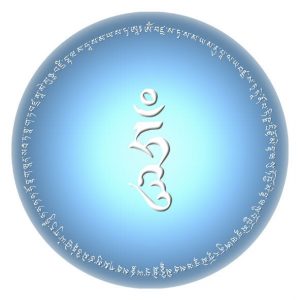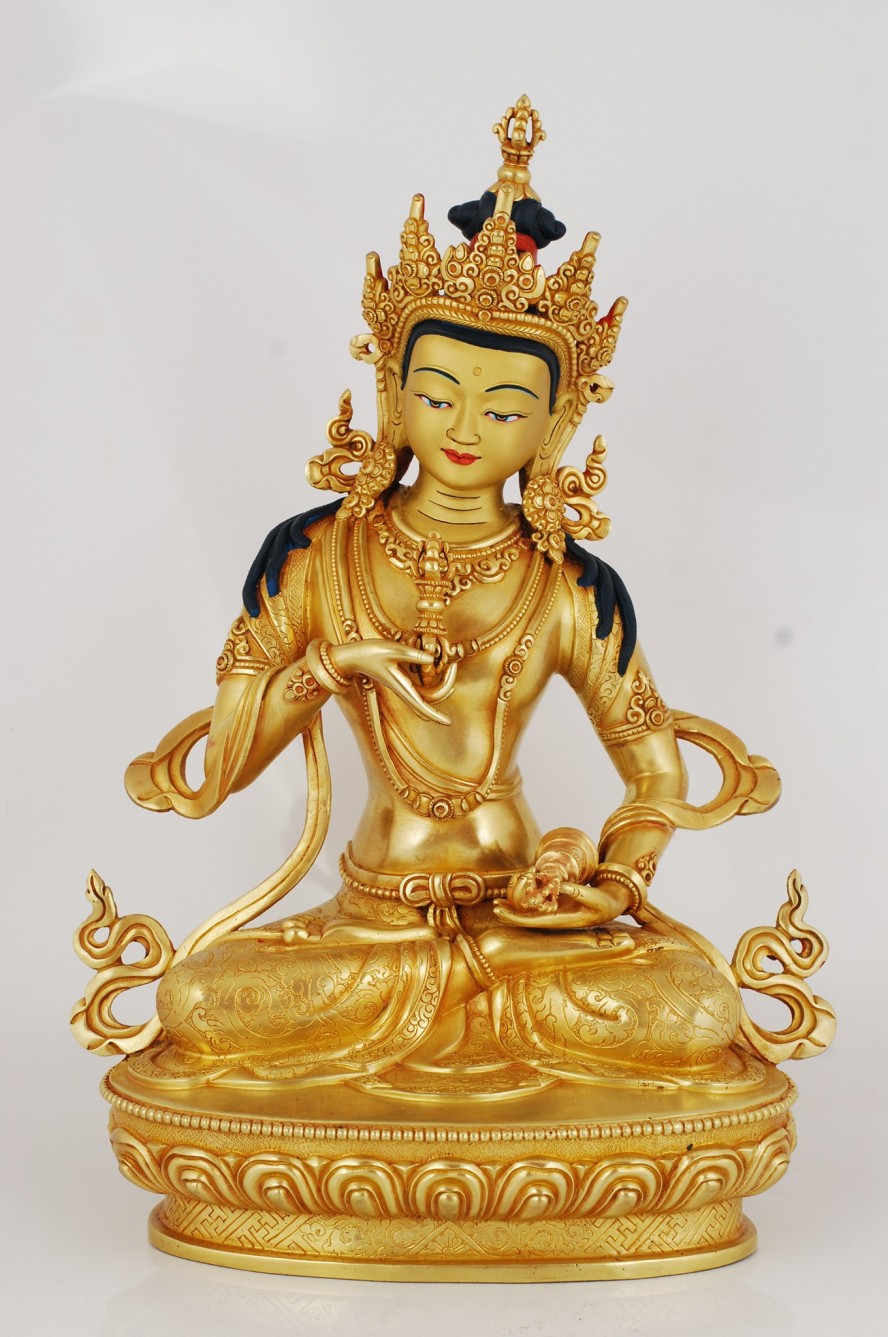
oṃ vajrasattvasamayam anupālaya vajrasattva tvenopatiṣṭha dṛḍho me bhava
sutoṣyo me bhava supoṣyo me bhava anurakto me bhava
sarvasiddhiṃ me prayaccha sarvakarmasu ca me cittaṃ śreyaḥ kuru hūṃ
ha ha ha ha hoḥ bhagavan sarvatathāgatavajra mā me muñca vajrī bhava mahāsamayasattva āḥā
Explanation of the 100 syllable mantra
By Jamyang Khyentse Wangpo and Kongtrul Lodrö Thaye
Here is the translated meaning of the 100 syllables:
From om to ya means “Om Vajrasattva’s samaya.”
From manu to satva means “care for me, oh samaya!”
From tve to bhava means “satisfy me!”
From suto to bhava means “Fulfill me!”
From supo to bhava means “Make me fully develop!”
From anu to bhava means “Be loving to me!”
From sarva to yaccha means “Grant me all the siddhis!”
From sarva to me means “Make me master all activities!”
From chitta to tu means “Make my mind virtuous!”
From hung ha to hoh is the passionate laughter of vajra wisdom; the wish to translate that is the pursuit of fools.
From bhaga to ta means “of all the Blessed Thus-Gone Ones.”
From vajra to munca means “Vajra, do not forsake me!”
The words vajri and bhava mean “Make me vajra-like!”
From maha to ah means “Great samaya being, ah!”
This was according to Manjugosha [Jamyang Khyentse Wangpo].
Alternately, according to Guna [Jamgön Kongtrül] the first part is the same followed by this slight difference:
Make me master all activities!
Make my mind virtuous!
hung ha ha ha ha hoh!
Oh Blessed Vajra, all tathagatas, may you not forsake me!
Make me vajra-like!
Great samaya being, ah!

